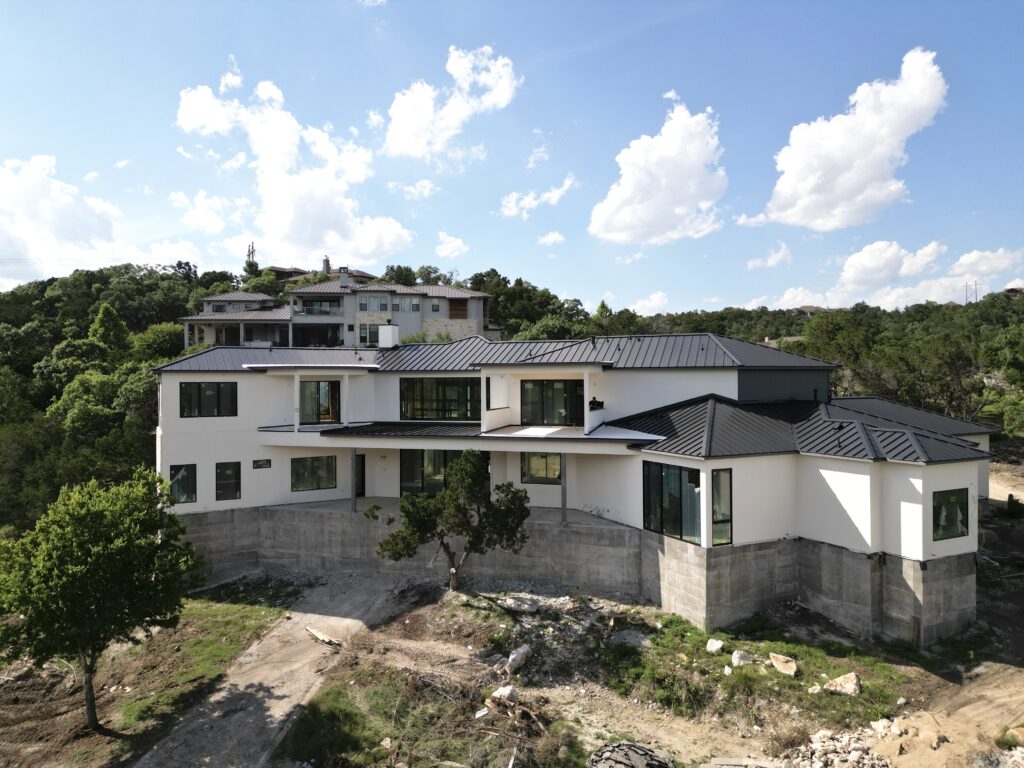Metal Roof Insulation Guide: Save Money & Energy!
Written By Cody Profitt
Metal roofs offer incredible durability and style, but without proper insulation, they can turn your home into an oven in summer and an icebox in winter. The good news? The right insulation can slash your energy bills while making your home comfortable year-round.

Why Your Metal Roof Needs Insulation
Think of insulation as your home’s thermal jacket. Without it, your metal roof becomes a giant heat conductor, making your HVAC system work overtime. Here’s what proper insulation does for you:
Cuts Energy Bills: A well-insulated metal roof can reduce heating and cooling costs by 20-40%. That’s real money back in your pocket every month.
Stops Temperature Swings: No more rooms that feel like saunas in summer or freezers in winter. Insulation keeps indoor temperatures stable and comfortable.
Prevents Condensation Problems: Metal roofs are notorious for condensation issues that can lead to mold, rust, and structural damage. Good insulation stops moisture before it starts.
Quiets Noise: Rain on a metal roof sounds romantic until you’re trying to sleep through a thunderstorm. Insulation dramatically reduces noise from rain, hail, and wind.
Protects Your Investment: Proper insulation extends your roof’s lifespan by preventing temperature-related stress and moisture damage.
Best Insulation Types for Metal Roofs
1. Spray Foam Insulation
The Premium Choice
Spray foam is like liquid insulation that expands to fill every crack and gap. It’s the closest thing to a perfect insulation solution for metal roofs.
Why It’s Great:
- Highest energy savings potential
- Creates an airtight seal that stops air leaks
- Acts as insulation and vapor barrier in one
- Conforms to any roof shape or angle
The Downside:
- Higher upfront cost (but pays for itself in energy savings)
- Requires professional installation with specialized equipment
Best For: Homeowners who want maximum energy efficiency and don’t mind paying more upfront for long-term savings.
2. Rigid Foam Board Insulation
The Balanced Option
These lightweight panels offer excellent insulation in a format that’s easier to work with than spray foam.
Why It Works:
- Excellent thermal performance
- Easy to cut and fit between roof framing
- Lightweight won’t stress your roof structure
- Good moisture resistance
Consider This:
- Higher cost than traditional options
- May need additional vapor barrier depending on your climate
- Requires careful installation to avoid gaps
Best For: DIY-friendly homeowners who want high performance without the complexity of spray foam.
3. Reflective Foil Insulation
The Hot Climate Champion
This shiny insulation works like a mirror, bouncing heat away from your home instead of absorbing it.
The Benefits:
- Incredibly effective in hot, sunny climates
- Lightweight and easy to install
- Most affordable high-performance option
- Doesn’t lose effectiveness over time
The Limitations:
- Less effective in cold climates where you need heat retention
- Requires proper air gaps to work effectively
- Won’t help much with sound dampening
Best For: Homes in hot climates where cooling costs are the main concern.
4. Fiberglass Batt Insulation
The Budget-Friendly Choice
The traditional pink stuff you’re probably familiar with. It’s not fancy, but it gets the job done at a low cost.
The Advantages:
- Most affordable option
- Easy DIY installation
- Widely available at any home improvement store
- Proven track record
The Drawbacks:
- Requires separate vapor barrier for moisture protection
- Can sag and lose effectiveness over time
- Doesn’t seal air gaps like other options
- Less effective overall thermal performance
Best For: Budget-conscious homeowners who plan to upgrade later or homes in mild climates.
Installation Tips That Save Money
Plan for Your Climate
Hot climates benefit most from reflective insulation, while cold climates need high R-value materials like spray foam or rigid boards. Mixed climates often do best with a combination approach.
Don’t Skip Ventilation
Even with great insulation, your metal roof needs airflow. Proper ventilation prevents moisture buildup and extends your roof’s life. Install ridge vents and soffit vents to create natural airflow.
Seal Every Gap
Air leaks can cut your insulation’s effectiveness in half. Use caulk, weatherstripping, or expanding foam to seal around pipes, vents, and anywhere different materials meet.
Consider Professional Installation
While some insulation types are DIY-friendly, others require specialized equipment and expertise. Spray foam, in particular, can be dangerous to install incorrectly and often voids warranties if not professionally applied.
Think Long-Term
Cheaper insulation that needs replacement in 10 years isn’t actually cheaper than quality insulation that lasts 30 years. Calculate the total cost over time, including energy savings.
What to Expect for Results
Properly insulated metal roofs typically see:
- 20-40% reduction in energy bills
- 10-15 degree temperature difference in extreme weather
- Elimination of condensation problems
- Significant noise reduction during storms
- Improved home comfort and resale value
Ready to Transform Your Metal Roof?
The right insulation turns your metal roof from an energy liability into one of your home’s best assets. Whether you’re building new or upgrading an existing roof, proper insulation is an investment that pays dividends for decades.
At Comanche Roofing, we’ve helped countless homeowners slash their energy bills with expert metal roof insulation. We’ll assess your specific needs, recommend the best insulation type for your climate and budget, and ensure professional installation that maximizes your savings.
Ready to start saving money and improving comfort? Contact Comanche Roofing today for your free consultation and discover how much you could save with proper metal roof insulation!
Get your free quote now!
Quick Links
© 2025 Comanche Roofing. All Rights Reserved.

